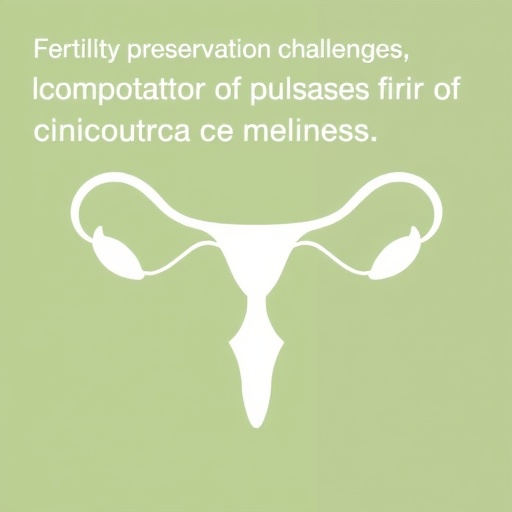The study, "Juvenile survival, competing risks, and spatial variation in mortality risk of a marine apex predator," published today in the Journal of Applied Ecology, confirms that unintentional capture in fishing gear (bycatch) is the greatest cause of death for young white sharks, a protected species in both Mexico and the United States.
More broadly, data from pop-up archival tags (PAT tags)–which have been used worldwide to track tens of thousands of individual ocean animals, including white sharks–represent "a widely-available, untapped data source that could dramatically increase our understanding of marine population ecology," said lead author Dr. John Benson, an assistant professor at the University of Nebraska.
Benson, who primarily studies terrestrial predators, conducted the white shark study as a postdoctoral researcher at Monterey Bay Aquarium. The aquarium– together with colleagues at California State University, Long Beach; Aquatic Research Consultants in San Pedro; and the Ensenada Center for Scientific Research and Higher Education (CICESE) in Baja California–has been tagging and tracking juvenile white sharks since 2002.
Research results at a glance
Data from 37 sharks tagged since 2002 revealed that:
- The overall estimated annual survival rate for young white sharks was 63 percent. Though this study did not address broad trends in the white shark population in the Northeastern Pacific, the researchers note that protection of white sharks in 1994 has likely resulted in a reduction in fishing-related mortality. The increase in juvenile shark sightings over the last 15 years may be an early indication of a positive sign for population recovery.
- Fisheries bycatch was the main source of mortality for juvenile white sharks in the region, highlighting the need to follow best practices related to incidental catch in coastal commercial and sport fisheries. Only two young white sharks tagged by researchers died of natural (non-fishing) causes.
- Overall mortality risk for young white sharks was lower for larger animals, which could be attributed to smaller sharks being more abundant, or simply more susceptible to capture in gillnets.
According to Benson, the paper adds to scientific understanding of white sharks, and shows how models that estimate survival rates for top predators on land–data obtained from radio telemetry and tracking collars–can be applied to ocean species that carry PAT tags.
"We always learn things from adjacent fields," said Dr. Salvador Jorgensen, principal white shark scientist at the Monterey Bay Aquarium and senior coauthor on the paper. "Before coming to the aquarium, John made his name studying mountain lions in Southern California. We were excited to see how the methodologies John was using for land-based predators could be applied in the ocean."
Taking a new approach
Benson realized that data from PAT tags opened the door to a new approach to estimate survival rates for young sharks, using what are called known-fate models.
"Because the PAT tags record detailed data on temperature and diving, it is possible to reconstruct the fate of the shark in the final minutes of each track," said Jorgensen. "We've looked at these data for years and often noted when a tag ended up on a fishing boat or in the stomach of a larger predator. Surprisingly, nobody had yet connected the dots to use this information to estimate a critical demographic rate: annual survival."
The technique hinges on being able to determine the fate of individual animals–data that PAT tags provide. If a tagged shark was eaten by a predator, or if it died in a fishing net, the tag recorded those data.
By applying known-fate models to those data, researchers estimated survival and mortality rates for the population at large. They also determined that fisheries bycatch was the main source of mortality for juvenile white sharks in the Northeastern Pacific, and that juveniles were at significantly greater risk of mortality when in Mexican waters.
Protections are in place
In California, it is illegal to target and land white sharks, and coastal waters are permanently closed to all gillnets within three miles of shore. In Baja California and throughout Mexico, targeting and landing white sharks is prohibited all year. However, gillnet fishing in coastal waters is still permitted for other species. Data from the study show that juvenile white sharks are an estimated nine times less likely to get entangled in California compared with Baja.
"We are learning that the gillnet regulations in California, although originally designed to protect sport fishing interests, have done a lot to protect juvenile white sharks," said Dr. Chris Lowe, director of the Shark Lab at CSU Long Beach and a coauthor of the paper.
The study also revealed that juvenile white shark mortality in gillnets is reduced when nets are checked by fishermen every 6 to 12 hours, so the young sharks can be released alive.
"In terms of reducing white shark mortality, avoiding setting nets close to shore and checking them frequently appear to be the best practices," Lowe said.
Coauthor Oscar Sosa-Nishizaki, a professor at CICESE, stressed that engaging with local fishermen in Mexico is critical to reducing mortalities and improving recovery prospects for the Northeastern Pacific white shark population.
"It's the best way to go," he said. "Mexican fishing communities play a vital role in enabling this research as well as helping us solve any issues as they arise."
CICESE doctoral student Emiliano García-Rodríguez, another coauthor, added: "It's very important to work with the fishermen, because we want to know whenever they incidentally catch a white shark."
"This research suggests the importance of a collaborative approach to management in California and Mexico, and opportunities to innovate on best practices that can support fishermen, research and protections for white sharks," Jorgensen said.
###
Other co-authors on the study include John O'Sullivan, director of collections at Monterey Bay Aquarium; Chuck Winkler of Aquatic Research Consultants; and Connor F. White, white shark researcher with CSU Long Beach.
John F. Benson, Salvador J. Jorgensen, John B. O'Sullivan, et al (2018) 'Juvenile survival, competing risks, and spatial variation in mortality risk of a marine apex predator' is published in Journal of Applied Ecology on 9 May 2018 and will be available here: https://doi.org/10.1111/1365-2664.13158
Media Contact
Monterey Bay Aquarium Media Relations
[email protected]
001-831-644-1069
http://www.demon.co.uk/bes
http://dx.doi.org/10.1111/1365-2664.13158




